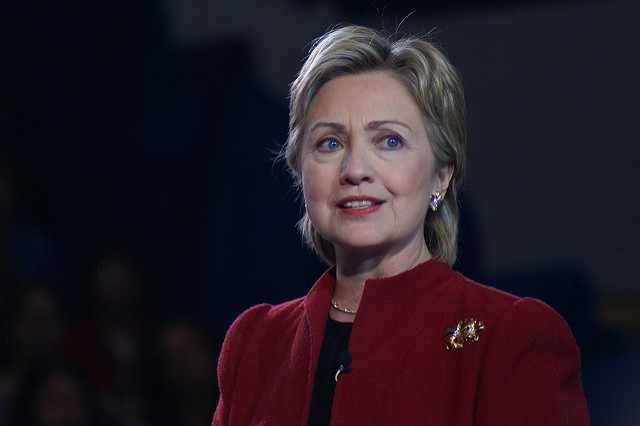“Never before have I seen national governments so weakened by the forces of populism and paralysed by the risk of defeat in the next elections,” Jean-Claude Juncker, President of the European Commission, worriedly expressed in the State of the Union Speech on September 14, 2016. And it is truly worrying. The far-right anti-establishment movement, characterised by nationalism, racism and egoism, is not merely an overdramatized political statement, but a hard fact. The proliferation of far-right parties such as the AFD (Germany), the Front-National (France), the PVV (the Netherlands), the FPÖ (Austria), the five star movement (Italy), the SVP (Switzerland) and the shocking developments in Hungary, Poland and Turkey are just some broader examples reflecting the new forces of populism across the continent. Additionally, unthinkable events such as the Brexit-vote could become much more frequent if the right-wing can continue to play their game with the fear of people. And this won’t be the only consequence of the rise of the far right wing if not stopped on time.
The need for a counter movement
But there is hope. The risk of an overruling populist movement in Europe can be prevented: Europe needs to feel the Bern. The ‘Feel the Bern Challenge’ named after its founder Bernie Sanders, the Vermont Senator and democratic socialist who ran for the democratic presidency nomination against Hilary Clinton, has unleashed a political revolution in the USA. This revolution has to swap over to Europe.
The movement build upon progressive ideas to attain social justice – not coming from the political elite but from the grassroots. Yet most importantly, it has also one key similarity with the far-right populist movement, namely the anti-establishment characteristic. This characteristic is the main element appealing to voters. It reflects the citizen’s feeling of disillusion with the bourgeois elite politicians who fail to understand the concerns of the lower and middle class.
However, there is one clear difference between the two movements. The far right populism movement looks at the past and uses fear, sweet anger and post-truth politics to mobilise its voters, particularly those that did not go to the polls before. Sander’s movement suggests future oriented ideas coming from the informed grassroots level to tackle the ever-growing inequality. And with a strong left-wing supported progressive agenda the movement could become the foundation of a new post-capitalism society.
The Progressive Agenda
The suggested progressive agenda is based on the political ideas of Sanders yet also Jeremy Corbyn (UK Labour Party Leader). Combining these thinkers with Paul Mason’s seminal book ‘Postcapitalism – A guide to our future’ the progressive agenda should set the following key political priorities: (1) policies for a new corporate design (2) regulations to directly tackle cooperate greed and (3) the development of policies based on research and wider human terms.
Let me briefly explain the ideas: first of all, policies for a new corporate design promote sustainable business models that make social contributions as corporate citizens. Put differently, businesses need policy support to fulfil their private interest but also contribute to the greater public good e.g. developing labour rights, tackling anti-corruption or providing education. This leads me to the second point: cooperate greed needs to be tackled effectively by closing down offshore businesses, stopping special taxation for multinationals and breaking up monopolies. This goes hand in hand with stabilising and socialising the financial system. The last point is straightforward, policies have to take into account research results and the needs of the lower and middle class. In short, politicians and policy advisors ought to think outside of the political bubble.
In fact, the progressive agenda foresees a stronger interaction between society, business and politics that potentially benefits the entire socio-economic system. There are two key results envisaged when following this agenda: (1) narrowing the wealth gap and (2) a stronger lower and middle class.
Wake up before it is too late
Unfortunately, the left wing in Europe has not yet understood the potential of joining this progressive agenda. Critics towards these utopian post-capitalism ideas are still too prevalent and the fear of political damage too great. Risking political damage could mean losing the electorate completely to right wing parties. However, it is time for the left wing to wake up before it is too late. The left should not merely protect the labour-class anymore – instead they should take on both big players and the elites in the system with greater conviction – as Sanders or Corbyn do. The latter two receive great support among the lower and middle class voters, especially among the youth, proving the success of their progressive agendas. The latest victory of Corbyn for the labour party leadership illustrates that the left wing does not need a marketing campaign but a movement.
In the suggested progressive society tools like fear, sweet anger and post-truth politics would no longer thrive. Still, as long as the left wing opposition in Europe does not start to restructure its agenda, it creates the political vacuum that the far right-wing forces from Warsaw to Paris happily enjoy as their playground for political propaganda.
Sources:
Mason P., (2015). Postcapitalism – A guide to our future. Allen Lane
cover image from flickr: flickr_cclicense





